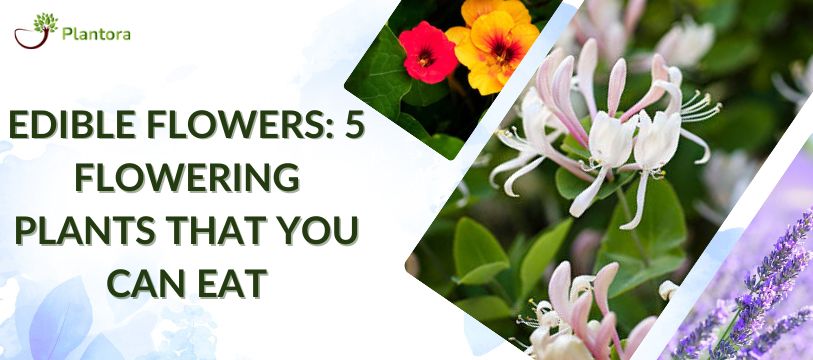Edible Flowers: 5 Flowering Plants That You Can Eat
Edible plants are the foundation of our food chain. Everything we consume in our diet eventually comes from or is supported by plants. And among the vast variety of many edible plants, there are many blooming plants with edible flowers that you can consume.
Flowers are one of the most famous and vital decorations with which you can surround your dinner table. But sometimes edible flowers can also show up in your dishes and can provide many benefits. So let’s explore some common edible flowers that you can add to your food.
5 Edible Flowers:
Dandelion (Taraxacum):
Dandelions are often regarded as weeds. However, these weeds have edible flowers and not only that but every part of this plant is edible. These plants feature small flowers with many bright yellow petals.
These edible flowers are rich in antioxidants and provide many options as food items. The flowers can be eaten raw or cooked with salads. They are also used in the making of wine and jelly. The roots of these edible flowers are used to make tea while the leaves can be used as sandwich toppings or any other dish with greeny items.
Honeysuckle (Lonicera):
There are almost 200 existing species of honeysuckle and among them, some of the most famous are the Japanese and woodbine varieties. The edible flowers of honeysuckle are aromatic with a sweet fragrance and are filled with sweet nectar.
These plants hold a high position as herbal plants in many traditional Chinese medicines. However, their efficiency is still not scientifically proven. These edible flowers are used to brew teas and make flavourful syrups. These syrups can be used as an alternative to sugar.
The berries of some varieties of Honeysuckle might be toxic so be careful.
Hibiscus:
There are many varieties of Hibiscus plants. The edible flowers of hibiscus usually grow in the tropical and subtropical parts of the world. Hibiscus features large ornamental flowers that can grow as large as 6 inches in diameter and come in many colours such as white, red, yellow, and many shades of pink.
The flowers can be eaten raw directly from the plant. However, they are used to make tea, jam, or relishes. Many studies suggest that hibiscus has many benefits that can help in improving heart health such as reducing blood pressure and cholesterol levels.
However, more conclusive studies need to be done to prove these benefits.
Lavender (Lavandula angustifolia):
Lavender is famously known for their beautiful blooms and sweet captivating fragrance. Moreover, these plants also have edible flowers. These herbs were originally grown in parts of Northern Africa and the Mediterranean.
The sweet fragrance and striking violet colour of these edible flowers make them perfect for many dishes including teas, baked goods, dry spices, and herbal mixtures. Moreover, the flavour of these edible flowers pairs well with chocolate, thyme, sage, and rosemary.
Nasturtium (Tropaeolum majus):
These plants are famous for their beautiful and large blooms with unique flavours. The leaves and flowers of these plants are edible. The flowers are funnel-shaped with bright red, yellow and orange colours which are perfect for garnishing desserts and salads.
The leaves are small, round-shaped and are used in many salads or blended into pesto. These edible flowers have many benefits as they are rich in minerals and antioxidants.
Precautions While Choosing Edible Flowers:
Flowers are used in many ways famously for their edible uses. However, not every flower is edible and ingesting a toxic flower can cause serious damage. So, you need to do your research before foraging any flower. Many famously used ornamental flowers such as foxglove, tulips, and narcissus are highly toxic.
Secondly, many edible flowers can be contaminated in various ways such as chemical fertilizers in the soil, pesticides, bad plant care, and close proximity to other poisonous plants. So, choose safe and clean edible flowers which are organically grown and have less chance of being contaminated.
Conclusion
Edible flowers provide many benefits and can be grown in your gardens as ornamental plants. These plants enhance the look and flavour of many dishes. So make sure to garnish your dishes and integrate these edible flowers into your recipes.
Some flowers can be toxic if ingested and to identify such plants you can use Plantora-The Best Plant Care and Plant Identification App. Plantora is a completely free-to-use plant care and identification app which offers many features to the users and helps them get one step closer to becoming a plant expert. With this app, you can take better care of your plants and get a solution for every plant problem.

Comments
Post a Comment